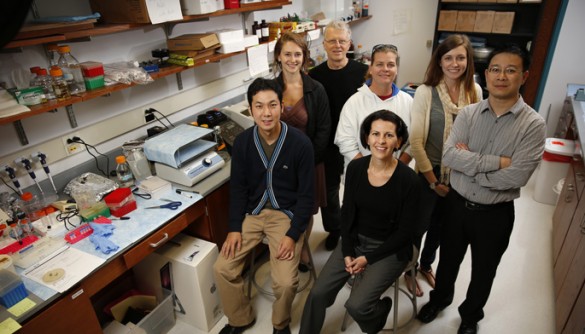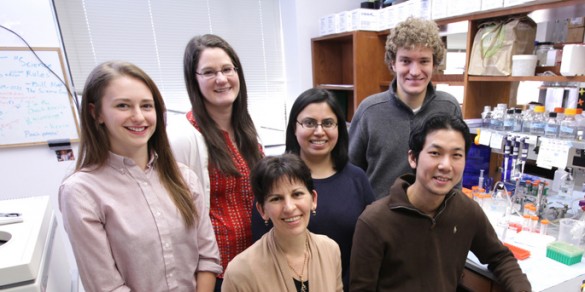by Will Fry
Solid tumors are generally more rigid than the surrounding normal tissue as a result of a denser extracellular matrix (ECM). Cells respond to this rigid matrix with cellular forces generated by the contractile complex actomyosin.
Matrix rigidity has also been associated with increased ECM degradation – necessary for tumor cell invasion and metastasis – by cytoskeletal structures called invadopodia. However, whether actomyosin-based contractility itself can induce invadopodia formation and ECM degradation remains an open question.
In the May issue of the journal Acta Biomaterialia, Rachel Jerrell and Aron Parekh, Ph.D., demonstrate that pharmacologic activation of actomyosin contractility increases invadopodia formation and matrix degradation.
Their work suggests that tumor cells respond to increases in matrix rigidity by increasing actomyosin-based contractility, leading to increased invasion. The findings show that contractility is a necessary intermediate between increased matrix rigidity and invasion and suggest that the actomyosin contractile machinery may represent a target to inhibit cancer cell spread.
The research was supported in part by National Institutes of Health grant CA143412.
Send suggestions for articles to highlight in Aliquots and any other feedback about the column to aliquots@vanderbilt.edu















